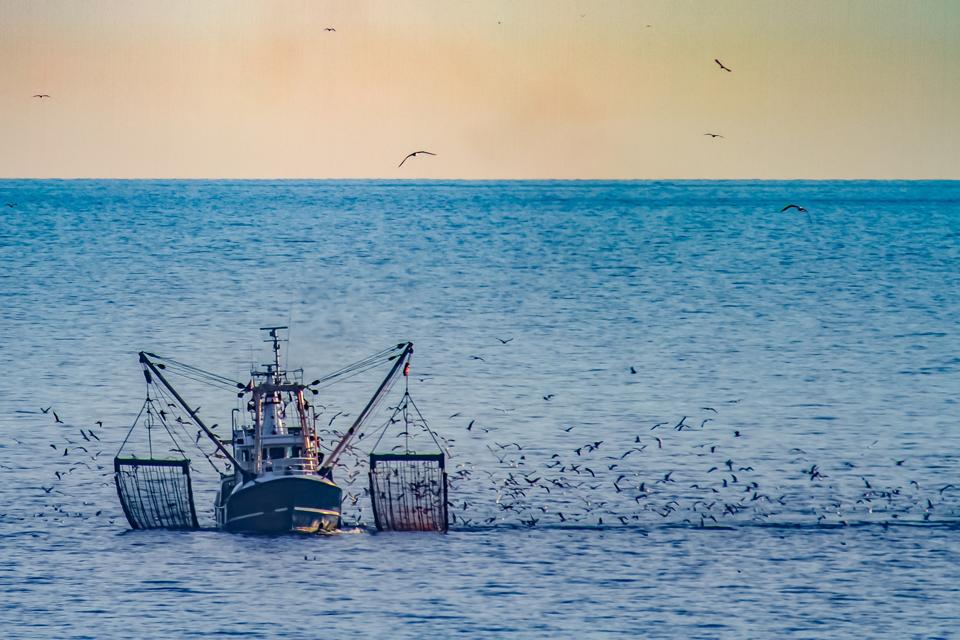Old growth forests usually get a lion’s share of the credit for their role in sequestering Earth’s atmospheric carbon. But subsurface sea mud is finally coming into its own as the potential unsung hero in the climate change wars.
Trouble is, oceanographers don’t really have a full handle on when and how these important mud deposits formed, much less how they can be fully protected. To answer such questions, researchers from the U.K. are focusing on three subsurface sea mud sites that date back thousands of years. All lie on what is known as the Northwest European Shelf, a shallow continental shelf area in the Northeast Atlantic.
Continental shelf sediments are really important for storing organic carbon over an enormous area, Zoe Roseby, a sedimentologist at the U.K.’s University of Exeter in Penryn, tells me at the European Geosciences Union General Assembly 2025 in Vienna. We’ve produced a model that has the capacity to predict the location of muddy deposits and consider how they’ve evolved over time, she says. We can then can identify potential hotspots of carbon storage, says Roseby.
In fact, in a recent paper published in the Journal of Geophysical Research: Oceans, the authors note that three mud centers in the northwest European shelf seas are all effectively sequestering carbon.
There are potentially hundreds of kilometers of such mud at depths of tens of meters, which is effectively helping sequester carbon, says Roseby, one of the paper’s co-authors. They’re a really important part of our global carbon cycle, she says.
The Celtic Deep is in what we call the Celtic Sea, and that is offshore southeast of Ireland and southwest of Cornwall in the U.K., Sophie Ward, the paper’s lead author and an oceanographer at Bangor University in the U.K., tells me at the European Geosciences Union General Assembly 2025 in Vienna. The Western Irish Sea mud belt is in the northwestern Irish Sea, which is in a semi enclosed body of water between mainland of the Republic of Ireland, Northern Ireland, and Great Britain, she says.
In the Celtic Deep, most mud accumulation has occurred in the past 10,000 years, with earlier tidal conditions too energetic for fine sediment deposition, the authors write. The Fladen Ground — located some 160 km north of Aberdeen, Scotland, appears to have been tidally quiescent since the region was fully submerged some 17,000 years ago, they note.
Muds are important because they have a greater capacity to store organic carbon than sands and gravels, says Roseby.
But here’s where there is an important distinction.
The formation of organic carbon in the marine environment has the potential to draw down carbon dioxide from Earth’s atmosphere (a carbon sink), says Ward.
The same cannot be said for inorganic carbon.
Organic carbon on the seafloor is derived from both terrestrial and marine sources of living (or once living) matter, whereas the inorganic carbon in the sedimentary environment is largely made up of broken shells and skeletons. The latter (mostly calcium carbonate) can have a very negative impact on the ecosphere by releasing CO2 from the marine environment back into our atmosphere. This is why these precious sea muds are so important.
But what is subsurface sea mud?
Mud is any sediment that’s less than 63 microns; the scientific cut off between mud and sand, says Roseby. Sand grains larger than 63 microns is what you’re seeing on the beach, she says.
How does this mud build up over time?
Muds have this capacity to form very thick deposits which can then store quite large volumes of carbon, says Roseby. It’s a combination of the surface area of the muds, but there’s also a tendency to form thick deposits that makes them important for carbon storage, she says.
Ancient Climate
Thousands of years ago, when the shelf seas were a lot shallower because so much water was locked into ice sheets in some areas, the tidal dynamics were very different to what they are now, says Ward. Over time, the water depth has changed and the configuration of the land, the shapes of the shelf seas have changed massively, she says.
An Expensive Proposition
It’s important that we know where these muddy deposits are, so that we can quantify carbon stocks, says Ward. But going out and sampling these muddy deposits can be a very expensive research campaign; expensive ships and large coring equipment is required, with lots of post-sampling analysis in the labs, she says.
As for the biggest threat to this subsurface mud?
That’s probably trawling for shrimp on the sea bottom, says Ward. So, it’s really important that we understand exactly what’s going on when these muddy deposits are trawled and the potential effects for carbon that is stored and locked up in these muddy deposits, she says.
Like most mud deposits around the U.K., the Celtic Deep is intensively trawled for Nephrops prawns in a fishery that grew rapidly from the 1970s, the authors note.
The Fladen Ground, a heavily trawled and organic carbon‐rich area, was highlighted as experiencing relatively high losses of organic carbon, the authors write.
The shrimp burrow into the mud which they use as a habitat, but the act of trawling itself causes significant amounts of the sequestered carbon to be released.
The Bottom Line?
In the future, we hope that sediments considered worthy of protection will go hand in hand with protecting subsurface habitat and living marine biology, says Roseby.

